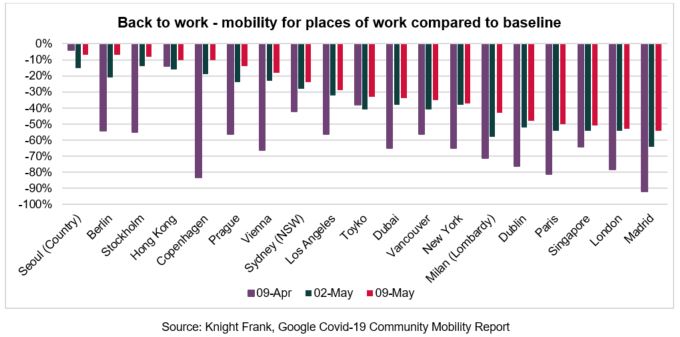As large-scale quarantine measures limit the movement of urban populations globally, useful data contained within Google’s Covid-19 Community Mobility Report allows us to assess how quickly cities are beginning to return to normal.
The report analyses how visits and the time spent at different places have changed compared to a baseline. In this blog post we look at how the mobility for places of work have changed for the week ending 9th May compared to a week and a month earlier. All of the 19 locations we tracked saw an increase in visits and time spent at places of work during the week ending 9 May compared to a week earlier and a month earlier as shown in the graph below.
Of particular interest is the fact that there have been noticeable step changes in some cities where restrictions have been loosened such as Milan (the Lombardy region), Berlin, Prague and Madrid. These cities have moved to 43%, 7%, 14% and 54% respectively below their baseline. This is very encouraging from Dublin’s point of view. Although, Dublin is still 48% below its baseline, the fact that we are beginning to loosen our restrictions – with the 18th May marking the first of a five phase approach to unwinding our quarantine measures – means that we could be in line to replicate the large changes in mobility witnessed in these cities which could expedite our return to ‘normality’.
Five of the cities tracked are within 10% of their baseline with Seoul joining Berlin at 7% below, Stockholm at 8% below and both Hong Kong and Copenhagen at 10% below. Madrid at 54% below is still the furthest from ‘normality’, yet this is a marked improvement from -92% one month ago.
